Dals Garden / 달의 정원
10.9Km 2025-03-18
13-31, Chiin 1-gil, Hapcheon-gun, Gyeongsangnam-do
055-934-0107
The ‘Dals Garden’ is a modern facility grafted on a traditional Korean style house. The old but graceful walls with the garden beyond them welcome the guests first. Entering the house, various flower plants and a wide grass garden add to the excitement of travelers. The Toenmaru (a narrow wooden porch running along the outside of the room), pillars and tiles of the neat and well-constructed Korean style house, shine as if they are wiped with oil every day. The peak of Mt. Gayasan beyond the house looks like a picture at a glance. The Moon Garden has 10 rooms in total. Among them, 2 Special Rooms are a little wider than ordinary rooms and equipped with a sink. Though cooking in the room is not allowed, simple food and beverage can be consumed if they are cleaned well afterwards. The room with a single bed is good for a solo traveler or a foreigner who is not accustomed to sleeping in an Ondol room. It takes only 3 minutes to go to Haeinsa Intercity Bus Stop. It is required, however, to pay the admission fee to Haeinsa Temple and the parking fee in addition to the room rates because the house is located on the way to Haeinsa Temple. It is recommended to enjoy walking around the Haeinsa Temple early in the next morning or going up to nearby peaks such as Mt. Maehwasan or Namsan Cheil Peak.
Chuwoojae House / 추우재
11.4Km 2025-08-12
20-1, Gaesil 2-gil, Ssangnim-myeon, Goryeong-gun, Gyeongsangbuk-do
+82-54-956-4022 / +82-10-3207-4022
The village of Gaesil is known as the village of the Seonsan Kim clan. It was established by the descendants of Kim Jong-jik (pen-name: Jeompiljae, 1431-1492), a leading Korean Neo-Confucian scholar and the founder of the Yeongnam Sarim faction during the mid-Joseon period. Boasting over 300 years of tradition, the village is home to sixty households as well as a number of cultural heritages including the head house of Kim Jong-jik (Provincial Folk Material No. 62), Doyeonjae (Provincial Cultural Heritage material No. 111), which is the old village school, and the printing woodblocks for a collection of literary works including Yijonrok (a book about the life and achievements of Kim’s father Kim Suk-ja) written by Kim Jong-jik (Provincial Tangible Cultural Heritage No. 175).
The residents have renovated the village’s earthen walls and hanok houses into a current hanok village, and also run various hands-on experience programs including a hanok stay, a farm product cultivation program, and traditional etiquette and games, thereby offering urban travelers an opportunity to experience a truly rural lifestyle. Chuwoojae House, situated in the heart of the village of Gaesil, has two buildings that are available for rent including the bonchae, which is a single-family house, and the sarangchae, which is a detached building). All guestrooms are equipped with a bathroom and cooking facilities. In particular, the bonchae is heated with a furnace. Guests can use the village public parking lot, but there is also a separate parking lot not far from the house.
Hadongdaek House / 하동댁
11.5Km 2025-08-13
45, Gaesil 2-gil, Ssangnim-myeon, Goryeong-gun, Gyeongsangbuk-do
+82-54-956-4022, +82-10-3207-4022
The village of Gaesil is known as the village of the Seonsan Kim clan. It was established by the descendants of Kim Jong-jik (pen-name: Jeompiljae, 1431-1492), a leading Korean Neo-Confucian scholar and the founder of the Yeongnam Sarim faction during the mid-Joseon period. Boasting over 300 years of tradition, the village is home to sixty households as well as a number of cultural heritages including the head house of Kim Jong-jik (Provincial Folk Material No. 62), Doyeonjae (Provincial Cultural Heritage material No. 111), which is the old village school, and the printing woodblocks for a collection of literary works including Yijonrok (a book about the life and achievements of Kim’s father Kim Suk-ja) written by Kim Jong-jik (Provincial Tangible Cultural Heritage No. 175).
The residents have renovated the village’s earthen walls and hanok houses into a current hanok village, and also run various hands-on experience programs including a hanok stay, a farm product cultivation program, and traditional etiquette and games, thereby offering urban travelers an opportunity to experience a truly rural lifestyle. The Hadongdaek House has two traditional Korean-style guestrooms. The Maesil room is equipped with a kitchen and a bathroom, while guests who stay in the Juksil should use the communal bathroom and kitchen outside the room. The well-kept garden harmonizes perfectly with the cozy hanok.
Lang Studio / 랑 스튜디오
11.6Km 2025-08-12
37, Gaesil 1-gil, Ssangnim-myeon, Goryeong-gun, Gyeongsangbuk-do
+82-54-956-4022 / +82-10-3207-4022
The Lang House of the Gaesil Village Farming Association Corporation is a hanok style of accommodation that has one spacious guestroom consisting of a bedroom, kitchen and bathroom, with a capacity of 4 to 6 people. This tile-roofed hanok with a wooden door and white walls is fully equipped with all the modern amenities including TV, fridge, air-conditioner, toiletries, Internet, cable and so on. Guests can cook with the cooking utensils provided in the kitchen and hold a BBQ party outdoors. However, the guests are expected to supply the charcoal themselves.
Known as the village of the Seonsan Kim clan, Gaesil Village was founded by the descendants of Kim Jong-jik (pen-name: Jeompiljae, 1431-1492), a leading Korean Neo-Confucian scholar of the early Joseon period who died during the Literati Purge of 1498. The head house of Kim Jong-jik (Provincial Folk Material No. 62) and Doyeonjae (Provincial Cultural Heritage Material No. 111), the old village school, are also situated in the village. In addition, the nearby Daegaya Museum displays the writing accessories of Kim Jong-jik (Provincial Tangible Cultural Heritage No. 209).
The village is also known as Gaehwasil, meaning “a beautiful valley with blooming flowers” as it is surrounded by a flower-covered mountain called Mt. Hwagaesan, a 350-year-old bamboo forest, and Jeopmubong Peak, which is said to resemble a fluttering butterfly. Over 80% of the village houses are traditional hanok buildings nestled amid a cozy environment.
During the Campaign to Create Beautiful Communities conducted in 2001 and the Farm Experience Village Development Project in 2005, the village’s hanok were renovated or entirely rebuilt, earthen-stone walls were built, walking paths created, and refined landscaping works carried out, establishing the village in its current form. Furthermore, a village shelter, experience center, Internet café, and other facilities were built for the convenience of residents and visitors alike. In recognition of the villager’ efforts to revitalize their community, Gaesil was awarded the presidential citation at the Korea Rural Village Awards in 2011.
Designated as a NongHyup’s Farm Stay Village in 2003, Gaesil operates a wide variety of hands-on experience programs relating to nature, agriculture, and local traditions, such as collecting sweet potatoes and rice planting; Korean traditional etiquette and tea ceremony; kite making and straw handicrafts; traditional food experiences such as yeot (Korean hard taffy) and yugwa (deep-fried sweet rice cakes); traditional games such as riding on a swing and neolttwigi (Korean see-saw); as well as loach fishing, ice sledding and so on. Gaesil Village, a representative farm stay village that “blooms” in every season, attracts around 50-60,000 visitors every year.
The House of Soccer kkumnamu (Future Soccer Player) / 축구꿈나무집
11.6Km 2025-08-13
32, Gaesil 1-gil, Ssangnim-myeon, Goryeong-gun, Gyeongsangbuk-do
+82-54-956-4022 / +82-10-3207-4022
The House of Soccer kkumnamu (The House of Future Soccer Player) of the Gaesil Village Farming Association Corporation is a hanok-style accommodation complete with a grassy field and a courtyard filled with well-kept flowerpots, creating a serene atmosphere around the hanok. The house has two Korean-style rooms with a capacity of two to four people. The Nansil room also has a kitchen. This cozy hanok is equipped with modern facilities for guests’ comfort and convenience, as well as the full range of amenities including TV, fridge, air-conditioner, toiletries, and table. Guests are permitted to hold a BBQ outside provided that they supply the charcoal themselves.
Known as the village of the Seonsan Kim clan, Gaesil Village was founded by the descendants of Kim Jong-jik (pen-name: Jeompiljae, 1431-1492), a leading Korean Neo-Confucian scholar of the early Joseon period who died during the Literati Purge of 1498. The head house of Kim Jong-jik (Provincial Folk Material No. 62) and Doyeonjae (Provincial Cultural Heritage Material No. 111), the old village school, are also situated in the village. In addition, the nearby Daegaya Museum displays the writing accessories of Kim Jong-jik (Provincial Tangible Cultural Heritage No. 209).
The village is also known as Gaehwasil, meaning “a beautiful valley with blooming flowers” as it is surrounded by a flower-covered mountain called Mt. Hwagaesan, a 350-year-old bamboo forest, and Jeopmubong Peak, which is said to resemble a fluttering butterfly. Over 80% of the village houses are traditional hanok buildings nestled amid a cozy environment.
During the Campaign to Create Beautiful Communities conducted in 2001 and the Farm Experience Village Development Project in 2005, the village’s hanok were renovated or entirely rebuilt, earthen-stone walls were built, walking paths created, and refined landscaping works carried out, establishing the village in its current form. Furthermore, a village shelter, experience center, Internet café, and other facilities were built for the convenience of residents and visitors alike. In recognition of the villager’ efforts to revitalize their community, Gaesil was awarded the presidential citation at the Korea Rural Village Awards in 2011.
Designated as a NongHyup’s Farm Stay Village in 2003, Gaesil operates a wide variety of hands-on experience programs relating to nature, agriculture, and local traditions, such as collecting sweet potatoes and rice planting; Korean traditional etiquette and tea ceremony; kite making and straw handicrafts; traditional food experiences such as yeot (Korean hard taffy) and yugwa (deep-fried sweet rice cakes); traditional games such as riding on a swing and neolttwigi (Korean see-saw); as well as loach fishing, ice sledding and so on. Gaesil Village, a representative farm stay village that “blooms” in every season, attracts around 50-60,000 visitors every year.
Yeonpung Gotaek (the Old House of Munchung) / 연풍고택/문충고가
11.6Km 2025-08-12
44, Gaesil 1-gil, Ssangnim-myeon, Goryeong-gun, Gyeongsangbuk-do
+82-54-956-4022 / +82-10-3207-4022
Located in the village of Gaesil in Hapga-ri, Ssangnim-myeon, Goryeong-gun, Gyeongsangbuk-do, the Old House of Yeonpung is an historic 150-year-old house, and was formerly the anchae (the inner house) among the four structures built by the current owners’ ancestor, who served as the governor of Yeonpung-hyeon, Goesan-gun, Chungcheongbuk-do. The house was restored after being bombed during the Korean War, and is currently is used to accommodate visitors or for village events.
The Old House of Yeonpung is situated behind Hwasanjae Pass, which is the traditional wedding experience site of Gaesil village. It is considered a propitious site according to geomantic theory as there is a bamboo forest to its rear. During restoration work in 2010, the large anchae, which covered about 2,644m2, was renovated into a modern structure with four rooms.
In particular, the Juksil and Maesil rooms are very large, making them ideal for families and groups. A separate building with a large courtyard and a BBQ facility is available for guests who want to cook or have a barbecue. The charming courtyard comprises a well, a bench, and various flower trees.
Known as the village of the Seonsan Kim clan, Gaesil Village was founded by the descendants of Kim Jong-jik (pen-name: Jeompiljae, 1431-1492), a leading Korean Neo-Confucian scholar of the early Joseon period who died during the Literati Purge of 1498. The head house of Kim Jong-jik (Provincial Folk Material No. 62) and Doyeonjae (Provincial Cultural Heritage Material No. 111), the old village school, are also situated in the village. In addition, the nearby Daegaya Museum displays the writing accessories of Kim Jong-jik (Provincial Tangible Cultural Heritage No. 209).
The village is also known as Gaehwasil, meaning “a beautiful valley with blooming flowers” as it is surrounded by a flower-covered mountain called Mt. Hwagaesan, a 350-year-old bamboo forest, and Jeopmubong Peak, which is said to resemble a fluttering butterfly. Over 80% of the village houses are traditional hanok buildings nestled amid a cozy environment.
During the Campaign to Create Beautiful Communities conducted in 2001 and the Farm Experience Village Development Project in 2005, the village’s hanok were renovated or entirely rebuilt, earthen-stone walls were built, walking paths created, and refined landscaping works carried out, establishing the village in its current form. Furthermore, a village shelter, experience center, Internet café, and other facilities were built for the convenience of residents and visitors alike. In recognition of the villager’ efforts to revitalize their community, Gaesil was awarded the presidential citation at the Korea Rural Village Awards in 2011.
Designated as a NongHyup’s Farm Stay Village in 2003, Gaesil operates a wide variety of hands-on experience programs relating to nature, agriculture, and local traditions, such as collecting sweet potatoes and rice planting; Korean traditional etiquette and tea ceremony; kite making and straw handicrafts; traditional food experiences such as yeot (Korean hard taffy) and yugwa (deep-fried sweet rice cakes); traditional games such as riding on a swing and neolttwigi (Korean see-saw); as well as loach fishing, ice sledding and so on. Gaesil Village, a representative farm stay village that “blooms” in every season, attracts around 50-60,000 visitors every year.
Ungidaek House / 개실마을영농조합법인(웅기댁)
11.6Km 2025-08-13
32, Gaesil 1-gil, Ssangnim-myeon, Goryeong-gun, Gyeongsangbuk-do
+82-54-956-4022 / +82-10-3207-4022
Ungidaek House of the Gaesil Village Farming Association Corporation is distinctive for its red clay exterior. This cozy hanok comprises two rooms: Juksil, which accommodates 6 people, and Maesil, which is suitable for 4 people. Each room is decorated with white wallpaper and a red clay floor sheet, and is equipped with TV, air-conditioner, toiletries, hairdryer, table, and other amenities. Each room has an ensuite bathroom and cooking equipment.
Known as the village of the Seonsan Kim clan, Gaesil Village was founded by the descendants of Kim Jong-jik (pen-name: Jeompiljae, 1431-1492), a leading Korean Neo-Confucian scholar of the early Joseon period who died during the Literati Purge of 1498. The head house of Kim Jong-jik (Provincial Folk Material No. 62) and Doyeonjae (Provincial Cultural Heritage Material No. 111), the old village school, are also situated in the village. In addition, the nearby Daegaya Museum displays the writing accessories of Kim Jong-jik (Provincial Tangible Cultural Heritage No. 209).
The village is also known as Gaehwasil, meaning “a beautiful valley with blooming flowers” as it is surrounded by a flower-covered mountain called Mt. Hwagaesan, a 350-year-old bamboo forest, and Jeopmubong Peak, which is said to resemble a fluttering butterfly. Over 80% of the village houses are traditional hanok buildings nestled amid a cozy environment.
During the Campaign to Create Beautiful Communities conducted in 2001 and the Farm Experience Village Development Project in 2005, the village’s hanok were renovated or entirely rebuilt, earthen-stone walls were built, walking paths created, and refined landscaping works carried out, establishing the village in its current form. Furthermore, a village shelter, experience center, Internet café, and other facilities were built for the convenience of residents and visitors alike. In recognition of the villager’ efforts to revitalize their community, Gaesil was awarded the presidential citation at the Korea Rural Village Awards in 2011.
Designated as a NongHyup’s Farm Stay Village in 2003, Gaesil operates a wide variety of hands-on experience programs relating to nature, agriculture, and local traditions, such as collecting sweet potatoes and rice planting; Korean traditional etiquette and tea ceremony; kite making and straw handicrafts; traditional food experiences such as yeot (Korean hard taffy) and yugwa (deep-fried sweet rice cakes); traditional games such as riding on a swing and neolttwigi (Korean see-saw); as well as loach fishing, ice sledding and so on. Gaesil Village, a representative farm stay village that “blooms” in every season, attracts around 50-60,000 visitors every year.
Temple Haeinsa (해인사)
11.8Km 2023-01-12
122, Haeinsa-gil, Gaya-myeon, Hapcheon-gun, Gyeongsangnam-do
+82-55-934-3000
Un des trois temples majeurs du pays, avec Tongdosa et Songgwangsa, le temple Haeinsa est connu pour abriter le « Tripitaka Koreana ». Le « Tripitaka Koreana » est une écriture sainte bouddhiste gravée sur plus de 80 000 planches en bois dont l’écriture débuta en 1236 dans le but d’invoquer la protection de Bouddha face aux invasions mongoles.
Programme de Temple Stay à Haeinsa (해인사 템플스테이)
11.8Km 2024-12-17
Gyeongsangnam-do Hapcheon-Gun Gaya-Myeon Haeinsa-Gil 53
+82-55-934-3110
Haeinsa (ou temple Haeinsa), situé sur le mont Gayasan dans la province du Gyeongsangnam-do, est le foyer de Palmandaejanggyeong (Tripitaka Koreana), désigné comme héritage culturel mondial. C’est également l’une des attractions touristiques les plus célèbres de Corée.
Haeinsa étant le seul temple a accueillir le Tripitaka Koreana, il propose un programme unique où apprécier cet élément du patrimoine mondial de vos propres yeux, découvrir l’écriture sur des blocs de bois et le Chamseon, une méthode de méditation zen traditionnelle propre à la Corée. Vous pouvez également apprendre les enseignements bouddhistes en faisant le tour des ermitages et temples du mont Gaya, dont Haeinsa est le temple principal.
Parc National du Mt. Gayasan (section Baekundong) (가야산국립공원 - 백운동 지구)
12.1Km 2023-04-26
Baegun-ri, Suryun-myeon, Seongju-gun, Gyeongsangbuk-do
+82-55-930-8000
Mt. Gayasan dans Gyeongsangbuk-do a été désignée comme parc national en 1972. Le mont partage des frontières avec Seongju-gun, Hapcheon-gun et Geochang-gun. La belle route Gayasan Drive, qui s'étend de Suryun-myeon à mt. Gayasan, met en lumière la splendeur et la grandeur des falaises abruptes.
Dans la zone Baekundong, il est possible de visiter le temple de Beopju. Ce temple a été construit pendant la période Silla.
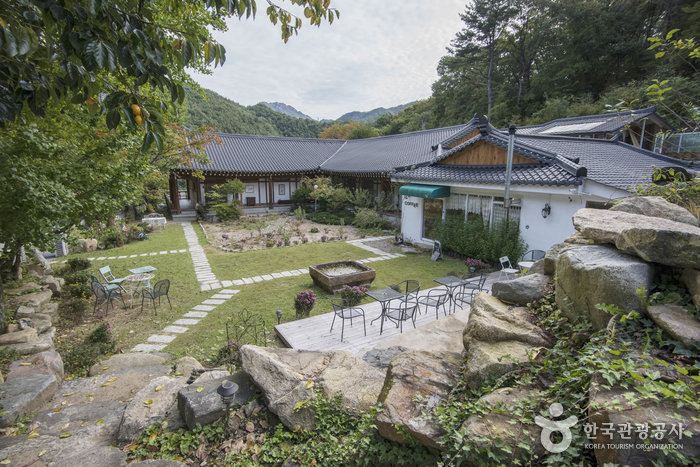
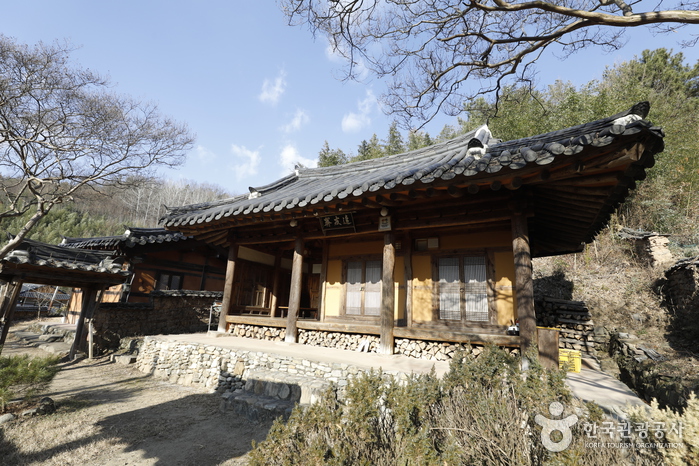
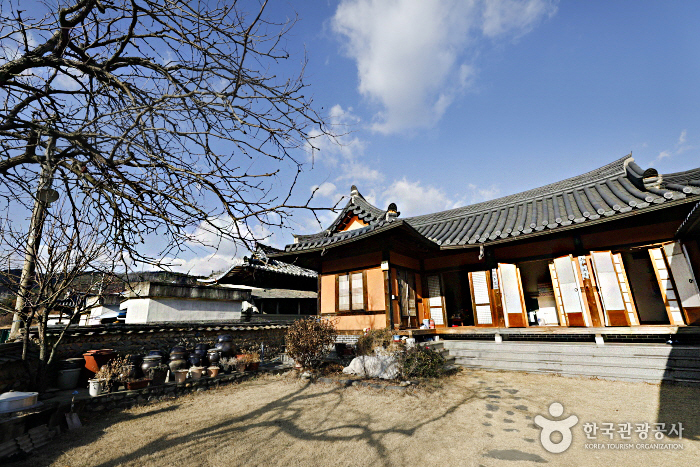
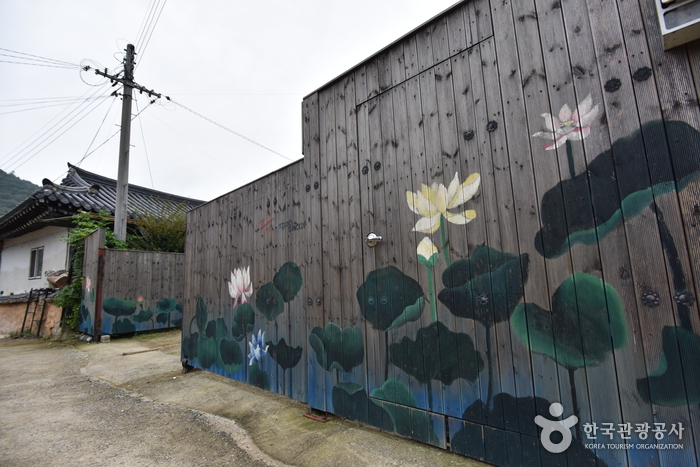
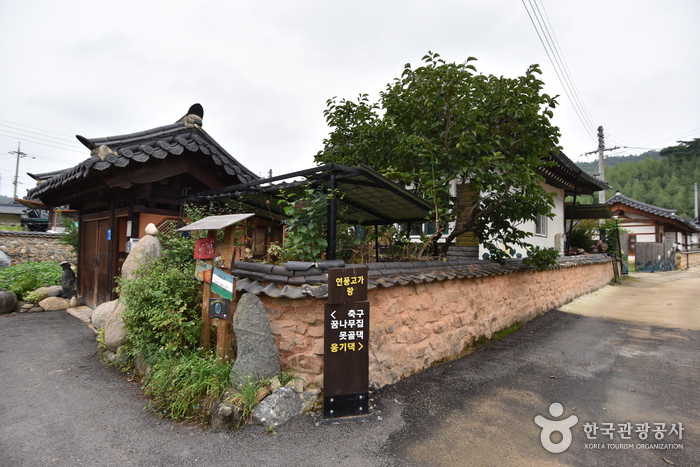
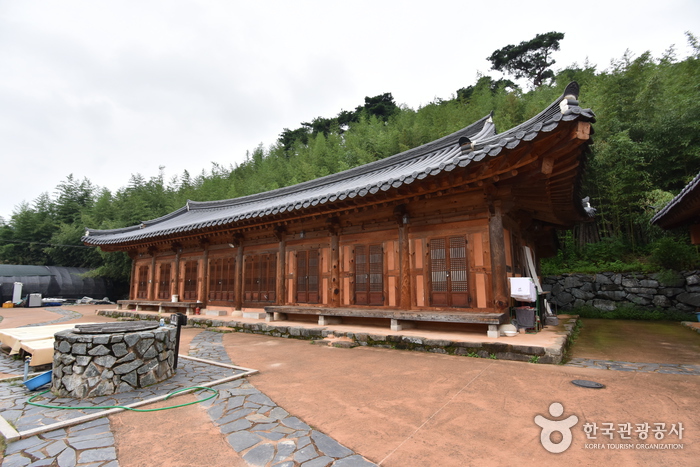
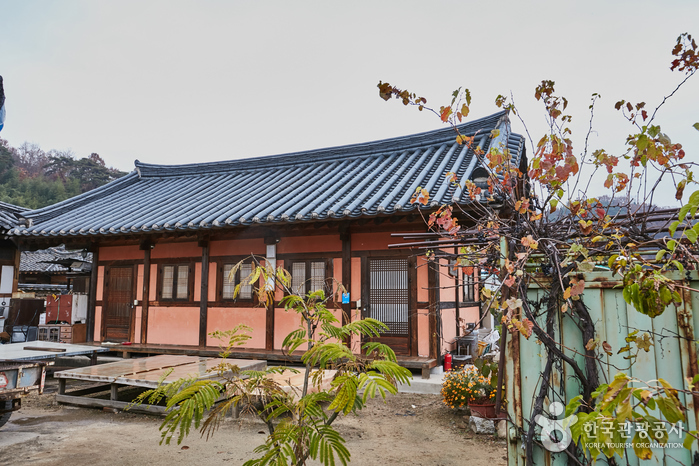



 Français
Français
 한국어
한국어 English
English 日本語
日本語 中文(简体)
中文(简体) Deutsch
Deutsch Español
Español Русский
Русский